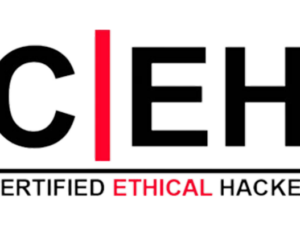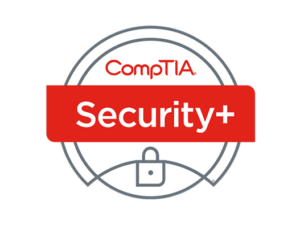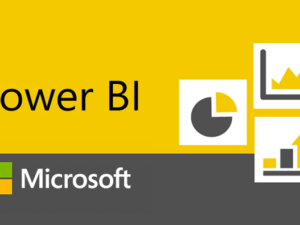AWS Architect Certification Training
- Description
- Curriculum
- FAQ
- Reviews

- Design and deploy scalable, highly available, and fault tolerant systems on AWS
- Efficiently handle Ingress and Egress data to and from AWS
- Identify the appropriate AWS service based on data, compute, database, or security requirements
- Identify the appropriate usage of AWS architectural best practices
- Estimate AWS pricing and identify cost control mechanisms
- Professionals who want Project Experience in migrating and deploying AWS solutions
- Professionals with IT Infrastructure background
- Professionals with Virtualisation experience
- DevOps professionals
- Professionals with an understanding of application, server, and network security and compliance
- Amazon Web Services (CSA) certification is rated as the most valued IT Certification – Global Knowledge Study
- In the latest Magic Quadrant report released by Gartner, AWS maintained its position as the king of cloud Infrastructure as a service (IaaS) providers
- Average salary of AWS Architect is $125k – Indeed.com
-
AWS market is expected to reach $236B by 2020 at a CAGR of 22% – Forrester
There are no specific prerequisites to enroll in the AWS Architect Certification course. Any candidate having basic knowledge of computers and programming can attend this training. Having prior working experience with AWS Services is recommended but not mandatory.
-
1Introduction To AWS
Learning Objectives: In this module, you will learn about the different services provided by AWS. You will be provided with an overview of important resources required for architecting an application.
Topics:
- Cloud Computing
- Cloud deployment and service models
- AWS Global Infrastructure and its benefits
- AWS Services
- Ways to access AWS Services
Hands-on:
- Sign-up for AWS free-tier account
- Create a S3 bucket through Console
- Create a S3 bucket through AWS CLI
- Launch an EC2 instance
-
2Security Management In AWS
Learning Objectives: In this module, you will learn about security management in AWS using Identity Access Management (IAM) and Key Management Service.
Topics:
- User management through Identity Access Management (IAM)
- Various access policies across AWS Services
- API keys service access
- Best practices for IAM
- Key Management Service
- Access billing and create alerts on billing
Hands-on:
- Create new users who can login to AWS console
- Create role for an application to access S3
- Create policies for new user to have either admin or limited privileges
- Credential rotation for IAM users
- Login to AWS console via MFA
- Create API keys for accessing AWS Services
- Create Budget
-
3Object Storage Options
Learning Objectives: In this module, you will learn about the different Object Storage Services offered by AWS, identify when to use a specific service, how to store/transfer data using these services and optimize the storage cost.
Topics:
- S3 bucket - Creation, Version Control, Security, Replication, Transfer Acceleration
- Storage classes in S3
- Life cycle policy in S3
- Cost optimization for S3
- CloudFront – Create and configure with S3
- Snowball
- Storage Gateway and its types
Hands-on:
- Hosting a Static Website on Amazon S3
- Versioning in AWS S3
- Replicating data across regions
- S3 Transfer acceleration
- Transfer and retrieve data from Glacier through lifecycle policy
- Upload a file to AWS S3 through a Website
- Accessing a static website through Cloud Front
-
4Amazon EC2
Learning Objectives: EC2 (Elastic Compute Cloud) is the backbone of AWS. In this module, you will learn about the concepts associated with an EC2 instance and their usage. This module covers different Amazon AMIs, a demo on launching an AWS EC2 instance, ways to connect with an instance and how to host a website on AWS EC2 instance.
Topics:
- Start, stop and terminate an EC2 Instance
- Security Group
- AMI
- VPC, ENI, Public and Private IP
- Storage services
- EBS and its types
- EFS
- Cost optimization
Hands-on:
- Host your website inside EC2
- Create an AMI
- Create an Elastic IP
- Attaching an EBS volume externally
- To create a snapshot
- Mount EFS volumes
-
5Load Balancing, Auto-Scaling And Route 53
Learning Objectives: In this module, you will learn the concepts of Load Balancing, Auto-Scaling and Route 53 to manage traffic.
Topics:
- Elastic Load Balancer and its types
- Comparison of Classic, Network and Application Load Balancer
- Auto-Scaling
- Components of Auto-Scaling
- Lifecycle of Auto-Scaling
- Auto-Scaling policy
- Working of Route 53
- Various Routing Policies
Hands-on:
- Create a Classic Load Balancer
- Create a Network Load Balancer
- Work with Application Load Balancer and Auto-Scaling
- Auto-Scaling and Scaling policy
- Point a sub-domain to EC2 box in Route 53
-
6Database Services And Analytics
Learning Objectives: In this module, you will learn about the different database services offered by AWS to handle structured and unstructured data. This module also gives you knowledge on how to analyze your data.
Topics:
- Amazon RDS and its benefits
- Amazon Aurora
- Amazon DynamoDB
- ElastiCache
- Amazon RedShift
- AWS Kinesis
Hands-on:
- Storing an application data in MySQL DB using Relational Database Service (RDS)
- Creating Tables, loading sample data and running queries
- Redis Cache
- Visualize the web traffic using Kinesis Data Stream
-
7Networking And Monitoring Services
Learning Objectives: This module introduces you to the Amazon Virtual Private Cloud. You will learn to implement networking using public and private subnets with VPC. Also, this module demonstrates how to monitor your services.
Topics:
- VPC – Benefits and Components
- CIDR Notations
- Network Access Control List v/s Security Groups
- NAT – Network Address Translation
- VPC peering
- AWS CloudWatch
- AWS CloudTrail
- Trusted Advisor
Hands-on:
- Create a Non-default VPC and attach it to an EC2 instance
- Accessing Internet Inside Private Subnet Using NAT Gateway
- Connect two instances in different VPC’s using VPC peering
- Monitoring an EC2 instance using CloudWatch
- Enable CloudTrail and Store Logs in S3
- Explore the Trusted Advisor
-
8Applications Services And AWS Lambda
Learning Objectives: In this module, you will learn about the different Application services offered by AWS, that are used for sending e-mails, notifications, and processing message queues. This module also deals with the latest trend of Serverless architecture using AWS Lambda.
Topics:
- AWS Simple Email Service (SES)
- AWS Simple Notification Service (SNS)
- AWS Simple Queue Service (SQS)
- AWS Simple Work Flow (SWF)
- AWS Lambda
Hands-on:
- Send an email through AWS SES
- Send a notification through SNS
- Send an e-mail through Lambda when an object is added to S3
- Send a notification through Lambda when a message is sent to SQS
-
9Configuration Management and Automation
Learning Objectives: This module helps you gain knowledge on various AWS services and tools used for configuration management and Automation.
Topics:
- AWS CloudFormation
- AWS OpsWorks - OpsWorks for Chef Automate, OpsWorks for Stack, OpsWorks for Puppet Enterprises
- AWS Elastic Beanstalk
- Differentiate between CloudFormation, OpsWorks, and Beanstalk
Hands-on:
- Installation of LAMP server in EC2 through CloudFormation
- AWS OpsWorks Stack
- Deploy a Web Application with DynamoDB using Beanstalk
-
10AWS Architectural Designs – I
Learning Objectives: This module gives you an idea about the importance of AWS guidelines for Well Architected Framework. You will also learn about the Resilient and Performant architecture designs.
Topics:
- Determine how to design high-availability and fault-tolerant architectures
- Choose reliable/resilient storage
- Determine how to design decoupling mechanisms using AWS services
- Determine how to design a multi-tier architecture solution
- Disaster Recovery Solution
- Choose performant storage
- Apply caching to improve performance
- Design solutions for elasticity and scalability
-
11AWS Architectural Designs – II (Self-paced)
Learning Objectives: Adding to Module 10, this module covers the remaining three concepts behind AWS Well-Architected Framework – Securing Applications and Architectures, Designing Cost-Optimized Architectures, Defining Operationally Excellent Architectures.
Topics:
- Well-Architected Framework
- Specify Secure Applications and Architectures
- Design Cost-Optimized Architectures
- Define Operationally-Excellent Architectures
-
12AWS Certified Solutions Architect Certification Exam Questionnaires (Self-Paced)
Learning Objectives: This module mainly contains exam questionnaires that will be discussed along with the guidance on taking up AWS Solution Architect Certification Exam.
Topics:
- AWS Solution Architect Certification Exam Guide
- Certification Exam Questionnaires
-
13DevOps on AWS (Self-paced)
Learning Objectives: In this module, you will learn how to implement DevOps tools on AWS.
Topics:
- Overview of DevOps - Lifecycle, Stages in DevOps
- AWS CodeCommit
- AWS CodePipeline
- AWS Code Deploy
Hands-on:
- Implement AWS CodeCommit
- Implement AWS CodePipeline
View the recorded session of the class available in your LMS.
You can attend the missed session, in any other live batch."







